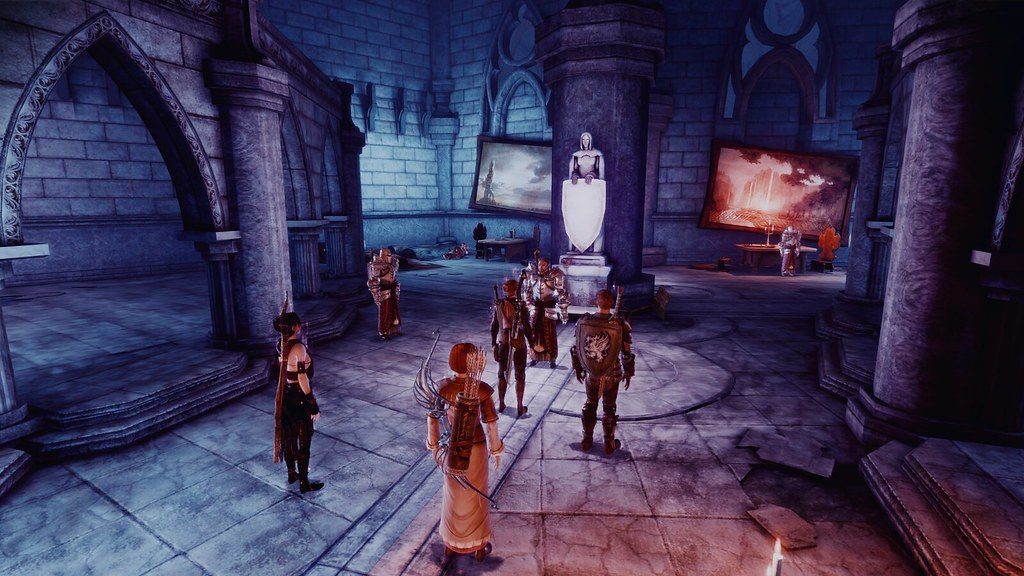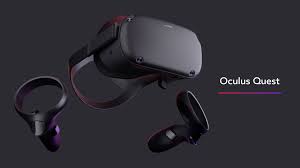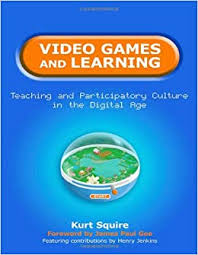
There’s a lot of potential for virtual reality in education. Many times, on social media and casual conversation concerning education, I hear the idea tossed around both seriously or jokingly that there should be a class called Adulting 101 where we teach young ones the basic everyday life responsibilities like paying bills and taxes, performing car maintenance and services, basic cooking knowledge, the list continues.
The argument also stands on whether the school system should be responsible for these lessons or if parents should hold the responsibility of teaching the necessities of adulthood. How do we ensure that we provide for our youth an equal opportunity to these life lessons? Not every parent may fully understand how taxes work. Not every school may be able to provide an additional course in this field. Plus, how can it be taught in a matter of a few weeks or even a few months?
Disclosure before we continue.
This is a thesis paper that I wrote for a course called “Virtual Environments” at Savannah College of Art and Design back in 2018. I am publishing it onto my blog as I own the writing and have credited the quotes and research using the APA format (the best I could in blog form).
Also, this blog has affiliate links. This means that, at no extra cost to you, if you so choose to participate in some of the learning opportunities here, we at Kyrabe Stories may receive a commission as gratitude from the partnering companies. Thank you sincerely for your support and for your desire to learn and grow! I hope you enjoy the blog!
Because Virtual Reality is vastly expanding within our Digital Age, this is what I propose:
What if we created a VR adventure game that has real-life obstacles embedded into the gameplay? Through the immersive use of Virtual Reality and the collective community of massive multiplayer interfaces, we have an opportunity to create a fun interactive game that focuses on teaching our younger generation the fundamentals of common everyday life necessities that may not be taught in a school environment and may possibly be overlooked as an educational necessity within a home environment.
For many of us, does this sound like a familiar experience at some point in school:
We enter a classroom where we are presented with a variety of new information for a specific topic. Upon receiving this information, we must study the facts, equations, and so on within a certain timeframe of that specific course; normally we do this for multiple courses at once.
Either weekly, biweekly, or twice at the middle and end of the course, we must “learn” all this new information for a test that will determine our intelligence of the subject. Finally, we end up forgetting a huge amount of this new information right after the course is completed. Through this memorization game, we are conditioned with the flawed misconception that “when faced with a problem to solve, good learners solve it quickly, the first they try or soon thereafter. If you have to try over and over again, this is a sign that you are not very good at what you are attempting to learn.” 1
This dilemma might not appear to be that big of a deal for topics that we think we won’t need to use on an everyday basis. A personal example of this would be trying to learn Trigonometry using the formulas of sine, cosine, and tangent back in high school. I could not understand these equations, nor could I relate them to anything that I would possibly need it for in my personal life. After the course ended with a tiresome crawl towards a passing grade, so too ended any attempt of understanding these problems. My theory was, “if I’m never going to use it, then why learn it?”

Fast forward seven years.
I decided to give programming a shot. Oh, the dread I felt when my professor wrote out the math problems that once gave me nightmares in high school was deep. Immediately, I regretted not taking the time to learn these equations. However, there was something different about applying them to actual situations. Back in the high school math class, the main activities we did were to memorize the problems then get tested on drawing out the graph (which I earned multiple red-pen “x” marks on). If we messed up enough times, we failed.
In the programming class though, I got to artistically experiment with the equations without the fear of failure looming over me. Through that entertaining experimentation of programming texture designs and the idea of embracing mistakes as a part of the learning experience, I gained more of a stronger understanding of Trigonometry than I ever did just from memorizing the equations. From this hands-on experience, I also was able to better understand James Paul Gee’s argument that “good video games allow players to be not just passive consumers but also active producers who can customize their own learning experiences.”2
The engagement versus the memorization.
Maybe a concept like that is something that’d be beneficial to incorporate in combining an immersive learning experience disguised as a video game. Pushed even further, we expand the wonders of virtual reality in education. Now, what if we were to apply that experimental and creative experience to an immersive video game? As Kurt Squire pointed out in Video Games and Learning:
“Video games are unique in that they are participatory. Games are complex systems that invite us to play with them. They are dynamic in that they unfold over time; most games evolve in response to our choices. Many games that are of interest to educators are simulations. They aren’t perfect simulations, and it’s not always clear what they are a simulation of, but very often they try to create some experience for the player. The real learning occurs through the transformations we have through playing and then engaging in related practices (viewing gaming forums, playing with friends, and so on).”3
Take for instance a game like Dragon Age: Origins.
The player can choose among three different races and six possible backgrounds that reflect one’s chosen race. From that background, we live out this character’s adventure by advancing different skills and interacting with the characters in the game. In the beginning, the challenges are simple with a few monsters to fight and basic choices to choose from.
As the game progresses, we must think more critically. Our choices can have either everlasting benefits or consequences throughout the rest of the game. Do I teach my mage how to master healing or does the team need her to be a warrior in animal transformation? Do I side with the Werewolves over the Dalish Elves or vice versa, or is my charisma high enough to promote peace between both? By increasing my skills in certain areas compared to the strengths and weaknesses of my team, will it give us the highest chance of defeating the Archdemon? 4
These questions might not be the typical things we ask ourselves while grocery shopping or visiting a car dealer. They are questions that require us to think critically based on each player’s unique circumstances.

Different learning experiences.
Unlike in school where we are tested to memorize information without the permission to cross-reference or to collaborate with fellow thinkers on a problem (because this would constitute as cheating), role-playing games (RPG) enforce the reality that not every situation is going to be a clear-cut, right or wrong, pass or fail scenario. In fact, many role-playing games like Dragon Age: Origins encourage multiple playthroughs through different scenarios. As James Paul Gee pointed out, “video games have an unmet potential to create complexity by letting people experience the world from different perspectives.” 5
There will be times when we must backtrack in order to solve an issue. We might have to recruit a member into our team that has skills that we lack. For events like this, we must be critical thinkers, not memorizers. Here’s where a Virtual Reality Adulting 101 video game would be beneficial. As quickly mentioned in our introduction, our school systems would have limitations. Some challenges would be due to time limits and material necessities if this curriculum was to be added to school systems.
And even if these limitations were bypassed,
Kurt Squire also identifies a constant issue that we still today are trying to figure out in our youth’s school system:
“There is a dangerous assumption prevailing in current education policy that education is really a problem of finding the “right” program (such as Success for All) that will work for all children and teachers across all situations. As opposed to treating education as a human endeavor that is driven by kids, teachers, and parents in complex social situations, this “magic bullet” approach makes educational programs the source of agency. It assumes that if you find the right program, you will “fix” education, end poverty, and save the world.” 6
Setting up the learning experience.
Similar to how Dragon Age: Origins is set up where we customize our character and choose our paths, we could set up Adulting 101 to have similar but more relatable tasks that are disguised as interactive games. Some examples of some Adulting 101 tasks would be:
- visiting a car maintenance shop where we, as the virtual character, gain experience points from instructed tasks on how to check oil levels and tire pressures. Over time, the guidance must be looked up and mistakes (like over-inflating a tire) will damage the character or hurt one’s experience score.
- cooking challenges where we’re guided on temperature control on the stove and how to handle grease fires. As our cooking experience increases, so does the task availability (a similar game would be The Cooking Game VR for the Oculus).
- an interactive cursive writing game where rooms are unlocked when one successfully carves a word or phrase onto the wall or door (this would be good for magic-wielding areas where a virtual wand is used as a writing utensil).
And it doesn’t have to stop here.
If multiple minds with various versions of their skills come together to contribute a section to the game, we can create an environment that can cater to multiple cultural and educational backgrounds. As James Paul Gee indicated, “a good video game adapts to the level of the player, rewards different players differently (but rewards them all), and often stays at the edge of the player’s regime of competence.” 7 and that we start the player “with cases that are basic or fundamental in the sense that they lead the learner to discover and practice what are, in fact, fruitful patterns and generalizations.” 8

Every single mind is too unique to learn the same thing in the same way at the same speed.
By combining a multitude of options and skills for the player to learn and expand on, hopefully, we can avoid the limitation and the dilutional trap of the “one size fits all” method. Overall, this Virtual Reality Life 101 class is not to replace the home or school lessons about life but to be an extension of that knowledge.
Paraphrasing Barbara Oakley from her TED Talk, she explains that we must understand at least two of our brain’s modes: focused and diffused; that one may learn, we need to know when to focus and when to relax or just have fun. When we remain in focus mode for too long, as we a lot of times do in school, our minds will stick to one problem and ignore other ideas. When we allow our minds to release that tension, then we’re able to come up with innovative ways around the issue. 9
Combining the virtual world with our physical lessons.
First, let’s be introduced to trigonometry in the classroom. Then, we can enter a Virtual Reality engineering game to apply that knowledge to our virtual characters and play with that new information in a usable sense. There will be a lot of trial and error in the initial versions of the game, but we can make it optional for a massive multiplayer mode where we can communicate and help each other expand and improve our knowledge. To finish off, Kurt Squire greatly expresses that, “there’s no one formula for creating an educational book…or an educational film. Likewise, there is no one way to create educational games. In fact, as educators and designers, we are not really good at it yet, but we’re starting to get there.”10
An interactive and collaborative game like this would require the minds of a variety of thinkers and access to VR systems all around to make it successful. But just as life itself, hopefully through trial, error, patience, and teamwork, we can figure out Adulting 101 together.
More Posts
5 Ways to Learn Using Social Media
My Top 5 Affordable Ways to Educate Myself
Employee Training Environment Using Virtual Reality – Interview with Adept Reality
Resources from the Research
Credit:
- James Paul Gee, What Video Games Have to Teach Us about Learning and Literacy, (New York: Palgrave Macmillan, 2003 Revised), 174.
- James Paul Gee, What Video Games Have to Teach Us about Learning and Literacy, (New York: Palgrave Macmillan, 2003 Revised), 208.
- Kurt Squire and James Paul Gee, Video Games and Learning: Teaching and Participatory Culture in the Digital Age (New York: Teachers College Press, 2011), 22.
- Dragon Age: Origins, Computer software (Redwood City, CA: Electronic Arts, 2010)
- James Paul Gee, What Video Games Have to Teach Us about Learning and Literacy, (New York: Palgrave Macmillan, 2003 Revised), 158.
- Kurt Squire and James Paul Gee, Video Games and Learning: Teaching and Participatory Culture in the Digital Age (New York: Teachers College Press, 2011), 57.
- James Paul Gee, What Video Games Have to Teach Us about Learning and Literacy, (New York: Palgrave Macmillan, 2003 Revised), 122
- James Paul Gee, What Video Games Have to Teach Us about Learning and Literacy, (New York: Palgrave Macmillan, 2003 Revised), 138
- Barbara Oakley, TEDxTalks: Learning How to Learn (YouTube, August 05, 2014. Accessed May 13, 2018)
- Kurt Squire and James Paul Gee, Video Games and Learning: Teaching and Participatory Culture in the Digital Age (New York: Teachers College Press, 2011), xi.





You went to SCAD? So awesome! This is a great idea.I loved this so much <3
Thank you! Yes, and it was by the grace of my G.I. Bill that I was able to afford it. I do admire their resources and hope that the programs continue to grow!
I love your creativity! This is a great idea.
Thank you so much, Joanne. I wouldn’t be surprised if it was already in the making with the things I’ve already seen in the Oculus store!
Great thesis! I had never really thought about virtual reality as a way of “adulting” this is food for thought! THank you for sharing!
Thank you! I didn’t realize what all VR could do until I took a different course in college to learn more about it. The Professor assigned “Ready Player One” as our course reading, and out of that whole book, I think I was mostly impressed with the concept of the virtual school system!
Awesome!! I enjoyed the read ?
Thank you for stopping by!
Having an ADHD Child, I have learned quickly that we for sure do NOT all learn the same way.
We certainly do not. Our minds are too unique for there to be a “one-size-fits-all” method. Heck, we can’t even get clothes to do that! That’s why I love the RPG method of videogames because although the end results may be similar, no two play-throughs will ever be exactly the same. I’m hoping that education can apply that same method for helping people to learn.
You have a thorough and well thought out Blog!!
Thank you so much, Maria! That means a lot to see! ?
This was such an interesting read. Science is advancing so rapidly that who knows what the future holds!
I am both excited and a little nervous! I love the new technology, but I don’t think I’m completely ready for “true” AI! I need some people to remain smarter than the computer just in case!
i have both tried VR and produced VR. It’s a fascinating world able to provide truly unique experiences.
That’s awesome that you have helped to produce VR experiences as well! Is your work already available to check out or is it still in production?
What an intriguing perspective! I love this!
Thank you! ? I admit that there are still a lot of kinks to figure out in this thesis, but ideas have to start somewhere, right?
Very interesting. A little over my head, but I followed the best that I could. 🙂 My son is a Dungeon Master in Dungeon and Dragons. It’s not only his outlet while attending college, but he uses his the same skills in every day life. Loved your article.
Thank you, and I admire your honesty! Your son has an amazing outlet to express both his creativity and his problem-solving skills! It’s great that both these skills are gradually growing from something that he loves to play!
Very creative and interesting thoughts here. Thank you for sharing!
Thank you so much for visiting the post! ❤
I’ve never tried virtual reality but I think you may be 9n to something!
Thank you! It’s really cool, but I have to warn that if the motion tracking is off, then it could be slightly disorienting. I think most higher quality cordless VR sets like the Oculus Quest have upgraded the quality in this, but if the VR set is dependent on a computer connection like the earlier model of the Oculus Rift, then the results could vary.
Great thesis. So true how we all learn so differently.
Thank you, Karie!
Back in high school, we memorized this.
I LOVED that insight. This is amazing and my kids are growing into this.
I believe I’ve seen some of the activities that you do with your kids! It’s awesome that they have the opportunity to learn so much from actual hands-on projects!
Confession here….I zoned out when you mentioned math & trigonometry 🙂 An interesting approach to adulting!
Lol, it’s fine and thank you! You’re not the only one, and I still struggle with it from time to time! I finally figured out that I’m a visual and hands-on learner, but sitting in a dark cold classroom will just put me to sleep if I have my jacket with me.
I retired as a high school math teacher six months ago. For about six month prior to retiring, my school had some VR equipment that was available for check out from the media center but I never used it myself. If I was still teaching, I would incorporate the technology in lessons as that’s a good way to keep today’s student engaged in learning.
That’s awesome that your school provided some VR equipment for the students to experiment with! I think they would have fun challenging their former teacher to some of the educational challenges!
Fascinating! My youngest daughter took her first coding class last year—in elementary school! She chose it as an elective-type class and loved it.
I am SOOOOO jealous of your daughter! I wish I had started learning how to code that young!
Great post! thank you for sharing! Absolutely love this! I can see amazing application for VR in replacing classroom learning for kids. Better applied skills development. better language development and learning foreign languages, learning how to dance or do sports! …when I mention that to other moms they look at me wild like i’m crazy lol
It’s the “outrageous” ideas that end up becoming the most innovative ones! We need people like you who are big dreamers!
Ummm….this actually sounds like such an awesome idea! I think you’re on to something!
I wouldn’t be surprised if it was already in the making, though I would love to help create ideas for the challenges if it is!
What a great concept and technology is definitely our future!
Thank you! I saw your name as A R and automatically thought, “Thanks, Augmented Reality!” ? Sometimes, I think I need to take a break from technology research!
What an interesting post! I have never thought about this. Thanks for sharing your insight.
Thank you so much for visiting the post! ❤
An Adulting 101 VR game would actually be so cool…and useful! Great thesis.
Thank you, Cindy!
Great read! Thanks for sharing. We live about an hour from SCAD : )
Thank you, and OMG that’s awesome! The Savannah or the Atlanta campus?
What an interesting perspective. I have 4 kids, and all of them have a different learning style. I think it is important for true and successful learning to occur, we need to teach in the manner that will best be learned by various peoples styles. Great paper.
Thank you, and I agree. All four of your kids I believe are extraordinarily unique, so to bring our each of their fullest potentials, it would definitely help for them to be able to customize their own learning experiences!
INTERESTING! Never considered visual reality before! 🙂
VR is pretty interesting to explore. So far, there’s already a variety of experiences to explore. My favorite has been the painting virtual spaces where we can literally walk around our creations!
This would be awesome!! I think that kids would benefit from this because let’s face it, how many teenagers leave home nowadays and know how to change a tire?
I count myself as guilty of not knowing how to do this until I was in my early twenties! ? That would definitely need to be one of the VR courses available!
I can honestly say that this is something I never thought about ~ what an interesting perspective!
Thank you, T.M! I would hope that with more contributors, players can truly customize their learning experience.
Games are one of the best ways to learn, there are endless possibilities and its usually more engaging than a lecture. I think you’re spot on that schools emphasize memorization way too much and virtual reality would provide hands on experience without real world risk. Things like chemistry experiments could be practiced this way first to lower stress and injuries. I’d love to see this method of learning implemented throughout the world.
Thank you, Brianna! I had often jokingly questioned how on Earth I couldn’t remember much from my History courses but could remember various characters’ background stories! With games, the engagement has so much potential of teaching us various topics AND helping us actually maintain that information!
[…] If you’d like to learn more about employee training environments using virtual reality, please go check out the Adept Reality website! We also have a blog post for “Using Virtual Reality for Adulting 101!” […]
[…] Using Virtual Reality for Adulting 101 […]